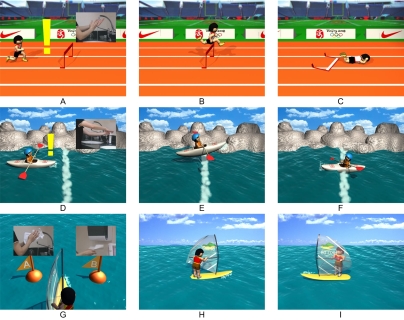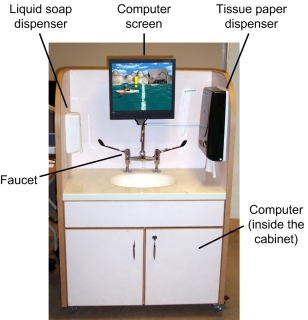Purpose
To motivate children with intellectual disabilities to learn handwashing and improve their performance by using computer-assisted teaching method.
Method
A teaching program was implemented using a computerized teaching station with faucet, soap dispenser and towel dispenser as user interface. In response to the children’s actions, animations were shown on the computer screen of the teaching station. A controlled study was conducted to compare the effectiveness of the proposed method (study group) with that of the convention teaching method (control group). Both groups of subjects attended a 30-minute handwashing lesson twice per week for two months. Their performance was evaluated using a handwashing task checklist and a learning motivation questionnaire, and by measuring the completion time and assessing their hand cleanliness.
Results
The computer-assisted teaching program improved the handwashing performance and learning motivation of the subjects. The study group appeared to outperform the control group. Observations reflected that the subjects were highly motivated to learn handwashing with the computerized teaching station. Conclusion. The proposed method has the potential to facilitate the teaching and learning of handwashing skills for children with intellectual disabilities.
Selected Publication
- K.S. Choi, P.K. Wong, W.Y. Chung. Using computer-assisted method to teach children with intellectual disabilities handwashing skills. Disability and Rehabilitation: Assistive Technology, vol. 7, no. 6 , pp. 507-516. [Informa Healthcare]


